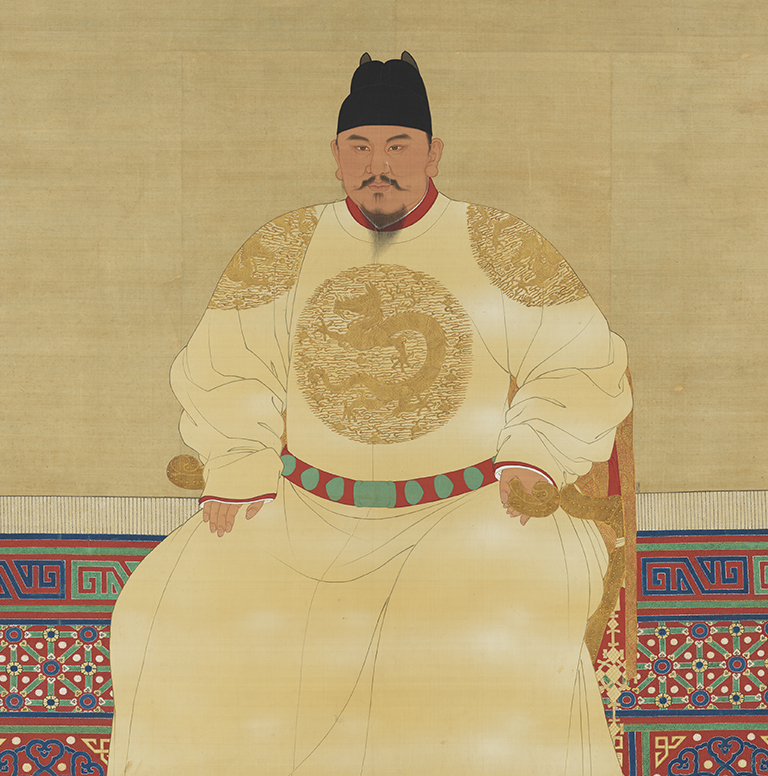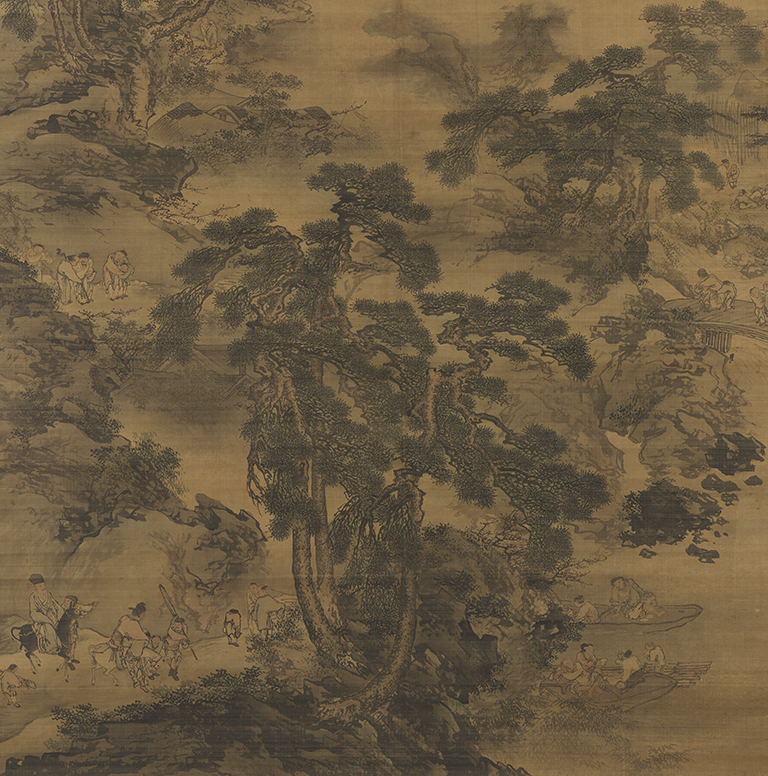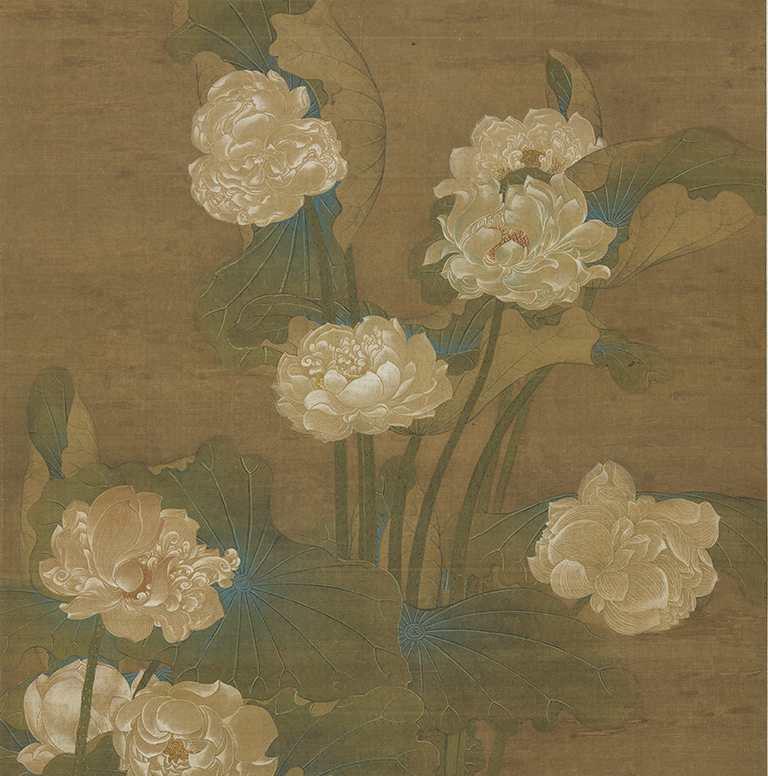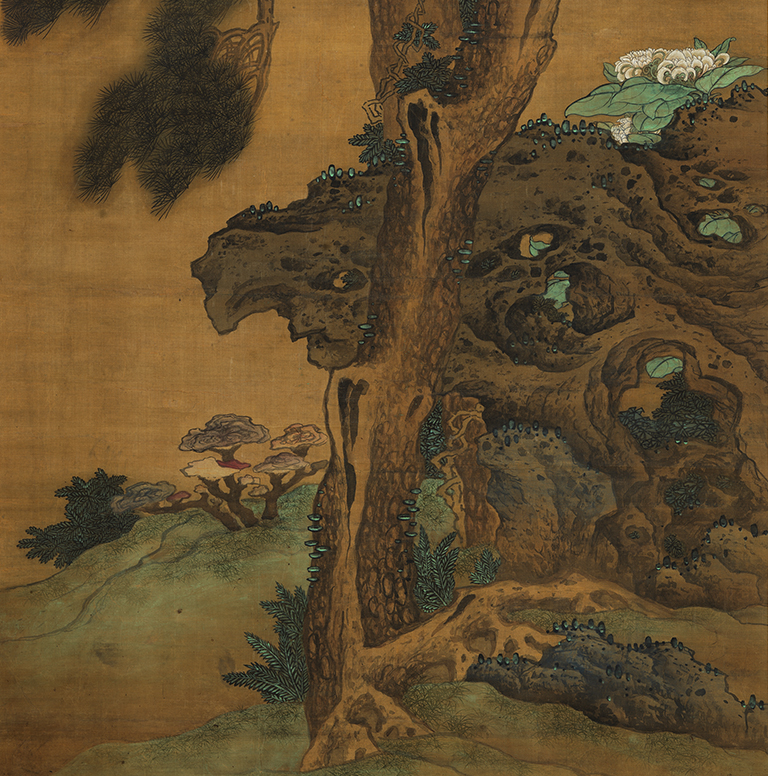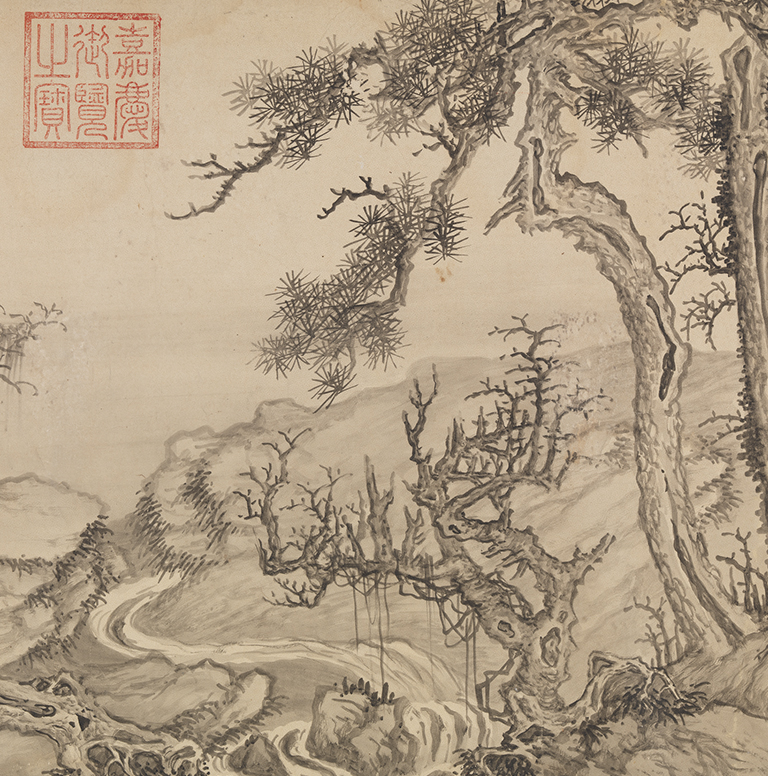A Seated Portrait of Ming Emperor Taizu
- Artist unknown
- Ming dynasty, 291.4x 162.8 cm
The founding emperor of the Ming dynasty, Taizu reigned from 1368 to 1398. A native of Haozhou (today's Fengyang in China's Anhui province), he was surnamed Zhu, given name Yuanzhang; "Hong Wu" was the title of his reign. Orphaned early on, he took vows as a Buddhist monk at Haozhou's Huangjue Temple. He later showed outstanding ability in the uprising that overthrew the Yuan dynasty, rising from commoner to emperor.
Painted on a large silk canvas, the portrait is meticulously executed, austere and imposing. The emperor wears a black cap with the corners turned up and a round-collared imperial robe embroidered with gold dragons. He sits erectly on a gold armchair, robust and regal, with a short black beard, in the prime of life.
Springtime Imbibing
- Dai Jin
- Ming Dynasty, 293.4x172 cm
Dai Jin (1388-1462), style-name Wenjin, sobriquet Jing'an, was a native of Qiantang (today's Hangzhou in China's Zhejiang province). An heir to Southern Song court painting, he established the Zhe School. During the Ming Xuande period (1426-1435) he was recommended to the imperial court; however, his talents were undervalued and he later returned to his home in southern China.
The painting depicts a group of villagers on a mountain path and adjacent riverbank, drinking wine and unsteady on their feet. The textured "axe-cut" strokes found in the rendering of rocks and soaring mountains interact with texturing and washes. Many of the strokes turn and bend, and the drapery lines of the figures' clothing are strong and natural, combining forceful brushwork and subtle variations of color. The painting bears no seal or signature but has historically been attributed to Dai Jin.
Fragrant Lotuses Cool the Summer Heat
- Xu Yi
- Ming Dnasty, 199x95.9 cm
Xu Yi (1599-1669), a native of Wuxi in China's Jiangsu province, adopted the style-name Zishao, the sobriquet Xiegong, and also went by the sobriquet Heyingzi. Nephew and student of the painter Li Caishi, Xu surpassed his uncle in talent and fame. He excelled at portraying a variety of subject matter: landscapes, human figures, architecture, flowers, birds, insects, and fish.
In this work, stately lotuses stand erect, their full blossoms and verdant leaves fresh and luxuriant. The shapes were first limned with the brush and then filled in with color wash, fully capturing the flowers' delicate beauty. Details of petals and leaves are meticulously rendered and partially colored with white and blue washes. It is said that Xu would produce the image of a seal with his brush, and the seals "Zishao" and "Xu Yi" appear in the lower left-hand corner.
After Zhao Mengfu's Green Pines in Eternal Spring
- Liu Du
- Ming Dynasty, 284.4x97.5 cm
Liu Du (active in the 17th century), style-name Shuxian, was a native of Qiantang (today's Hangzhou in China's Zhejiang province). He initially studied under the painter Lan Ying and was later influenced by the work of Li Sixun, Li Zhaodao, and Zhao Boju. His style is characterized by meticulous attention to detail.
In this work, two tall pines incline, their branches stretching upward in various configurations, accompanying them are old vines, fungi, and a mossy rock. Although the painting is after a work by Zhao Mengfu, Liu's brushwork and use of color are distinctly his own, the style lucidly elegant, confident and at ease. Completed in 1643, this is one of the few extant examples of the artist's work.
After Li Cheng's Wintry Grove on a Level Plain
- Xie Shichen and Wen Zhengming
- Ming Dynasty, 42.5x159;42.5x1714.4 cm
Xie Shichen (1488-later than 1567) and Wen Zhengming (1470-1559) were natives of Suzhou in China's Jiangsu province. Both carried on the legacy of Ming-dynasty painter Shen Zhou.
The text was written first, the painting executed later. In 1536, Xie brought paper to Wen and asked the latter for calligraphy. After viewing Li Cheng's painting "Wintry Grove on a Level Plain," Wen composed a colophon in praise. Eleven years later, in 1547, Xie made a copy of the painting – the barren trees, misty atmosphere, and meandering stream are all taken from Li Cheng's original. Wen's running script is in the style of Huang Tingjian; however, Wen's characters are more than five inches in size and the brushstrokes lack power, an aesthetic defect.

